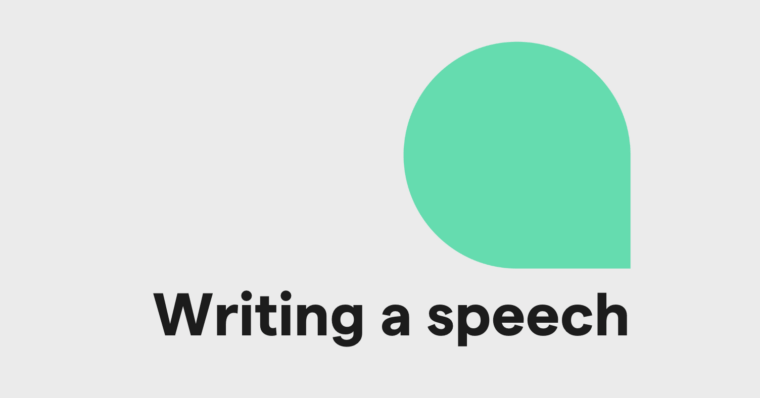
The importance and value of writing consistently—using consistent pronouns, punctuation, and following a specific style guide—is introduced in an academic setting. For years, we learn to follow grammatical best practices for writing the English language. And it can be tricky, given that the English language is full of exceptions and inconsistencies, and tends to break its own rules. “I” comes before “e” except after “c”… except when it doesn’t. Weird.
When we move beyond formal education, we tend to relax these writing rules. While we want that email to our landlord to be clear and confident, it isn’t going to be graded based on how strictly we followed the Chicago Manual of Style, or whether we used a semicolon correctly. We trade precise punctuation and conjugations for brevity and practicality. In our fast-paced world, we must get the point across quickly and directly.
At work, the onus is on us to communicate professionally and succinctly. Being consistent in our writing can help us get ahead. Consistency builds credibility with our team, business partners, and professional audience. Being consistent is a two-part journey. First, it’s about following writing conventions and rules consistently in your own documents. Secondly, it’s about keeping your writing style consistent—doing things the same way every time in a certain context.
Following consistent punctuation, numbers, and hyphenation makes our documents look more polished. As you develop your own style and writing rules, being consistent will save you time and effort in the long run.
Let’s review some of the most typical writing inconsistencies within punctuation, numerals, and hyphenation.
Punctuation
Apostrophes & Contractions
An apostrophe omits letters in a word or group of words to create a contraction. It is = It’s. Cannot = Can’t. I have = I’ve. You are = You’re. Using contractions can give your writing a casual tone, so use your best judgment to decide if appropriate. The key is to be consistent.
Inconsistent: It is essential to review our security policies every quarter. We’re continually updating procedures and adding best practices.
Consistent: It is essential to review our security policies every quarter. We are continually updating procedures and adding best practices.
Consistent: It’s essential to review our security policies every quarter. We’re continually updating procedures and adding best practices.
Commas
Commas are tough. We often use too many or not enough. Commas separate words, clauses, or ideas within a sentence.
Oxford or serial comma
Commas separate three or more words in a list. Using the Oxford comma, or the serial comma, is a stylistic choice. Again, the important thing is to be consistent. Please note, the Oxford comma is often necessary for clarity.
In this example, the Oxford comma clarifies that the writer went to the park with their sisters and John and Tony. John and Tony are not the writer’s sisters.
Addressing a person by name
A common writing mistake is to omit a comma when directly addressing a person by name. Be consistent when addressing a person in writing.
- Thanks Anna.
- Happy Birthday Tom!
- Mario there’s a package waiting for you downstairs.
Periods
Periods can often be confusing in relation to quotation marks and parentheses.
Periods and Quotation Marks
In American English, the period goes inside the closing quotation mark at the end of a sentence. It can be easy to mix this up and be inconsistent across documents or within the same document.
Periods and Parentheses
When a complete, independent sentence is entirely enclosed by parentheses, the period goes inside the closing parenthesis.
However, if the parenthetical material is nested inside another sentence, the period should go on the outside.
Acronyms
Whether you choose to use periods or not, the acronyms should be styled consistently throughout your document.
Inconsistent: The tour starts in the U.S. and concludes in the UK.
Consistent: The tour starts in the US and concludes in the UK.
Consistent: The tour starts in the U.S. and concludes in the U.K.
Numbers, times, and dates
Numbers
There are a few ways to treat numbers in writing. If following the AP style guide, you should write out numbers one through nine and use numerals for the number 10 and above. This rule also applies to ordinal numbers, spelling out first to ninth, and using numbers for 10th or greater. This rule is especially handy for technical or scientific writing.
The Chicago Manual of Style, however, instructs us to write out numbers from zero to one hundred in nontechnical writing.
The style you follow may depend on the nature of your work or message. Presenting lots of numbers in a slide deck? It is probably best to use numerals for information containing lots of stats and percentages. Writing a report? It is best to pick a style and stick with it.
Inconsistent: This quarter, 20 new employees joined our company. We hope to welcome twenty-five next quarter.
Consistent: This quarter, 20 new employees joined our company. We hope to welcome 25 next quarter.
Consistent: This quarter, twenty new employees joined our company. We hope to welcome twenty-five next quarter.
Another common inconsistency with numbers is the hyphenation (or lack of) in compound numbers. When writing any number made up of two words, you should use a hyphen between each word. This rule applies to any number between twenty-one and ninety-nine.
Inconsistent (and incorrect): My grandma turned eighty-six years old last week. My brother turns twenty one today.
Consistent: My grandma turned eighty-six years old last week. My brother turns twenty-one today.
Times
If you’re a working professional, you likely communicate your schedule multiple times a day—for meetings, interviews, webinars, and more. Is your meeting at 9 a.m. or 9 AM? Both can be right, but choosing one style and sticking with it makes your writing easier for your reader to follow, especially when scheduling time. Here are some options for keeping it consistent.
1. Lowercase a.m. and p.m. and use periods.
2. Capitalize AM and PM without periods.
3. Spell out noon and midnight instead of 12 p.m. and 12 a.m.
4. Use in the morning, this afternoon, or tonight. We recommend this only when writing prose or other non-business communication. Err on the side of clarity.
5. Do not use 9 a.m. in the morning because it is redundant.
Dates
Writing dates can vary across the world. In the US, we use the month-day-year format; in other countries, the day-month-year format is favored. People are often confused about how to write dates with commas. In the month-day-year format, place commas after the day and the year.
Grammarly lets you standardize the way dates appear throughout your document.
Inconsistent: Applications are due August 7th. We’ll announce the winners by 25 Aug.
Consistent: Applications are due August 7th. We’ll announce the winners by August 25th.
Consistent: Applications are due 10 Jul. We’ll announce the winners by 25 Aug.
Hyphenation
A hyphen joins words or parts of words. It’s not interchangeable with other types of dashes, such as an em dash or en dash. Using hyphens for compound modifiers is one of the common issues. To write hyphenated words consistently, use a hyphen in a compound modifier when the modifier comes before the word it’s modifying. Learn all about proper hyphenation.
Keeping you consistent and professional
It can be challenging to remember the various nuances and rules around commas, dates, and hyphens. Grammarly Premium will not only check for accuracy and clarity but also for consistency in your writing. Grammarly’s writing suggestions will alert you if there’s any variation in your use of apostrophes and quotation marks. Inconsistencies will be flagged and Grammarly’s suggestions will apply your preferred style to your entire document.
Using Grammarly Premium is almost as good as having a dedicated editor to do all the heavy lifting. Because truthfully, how many of us remember every grammar rule we learned in grade school or the style guide we used in college? When we send a quick email between meetings, we don’t always have time to check our commas or acronyms for consistency. Grammarly Premium tracks everything for you, ensuring that your writing comes across professionally every time.







